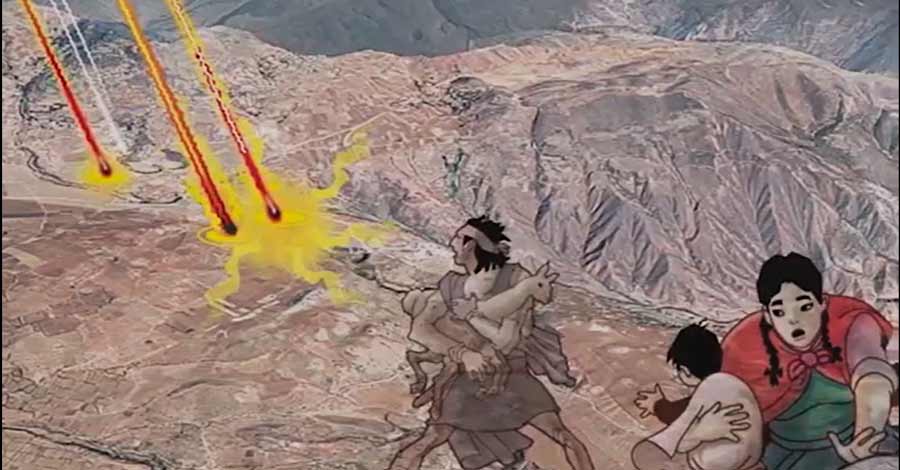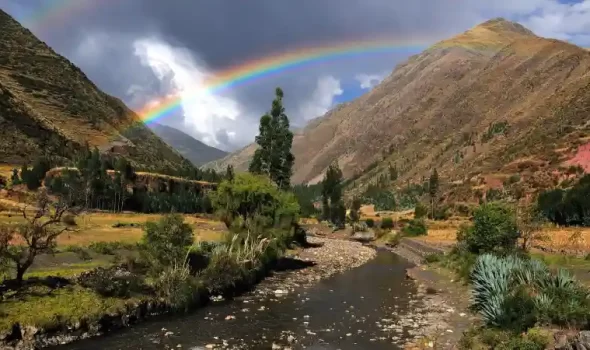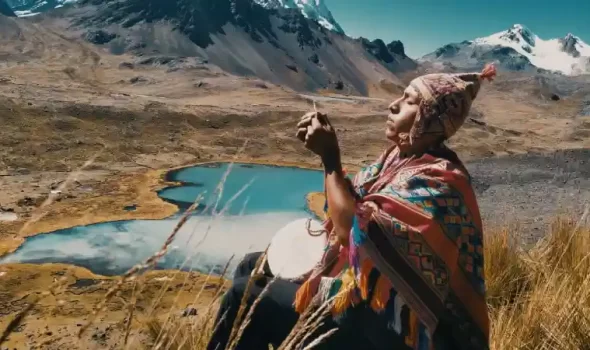Within the Andes mountain range, we find a cold and undulating plain over three thousand meters of altitude, this flat terrain suddenly rushes into the valley, and almost inadvertently appears one of the most colossal engineering works of the ancient Peruvians, Moray. A very peculiar gigantic work of Inca engineering due to the shape of its terraces, gigantic concentric rings. They are four sets of different sizes, but of identical structures and projections as if they were inverted and staggered cones.
Next, we will see together with Auri some aspects of one of the most spectacular places in Peru:
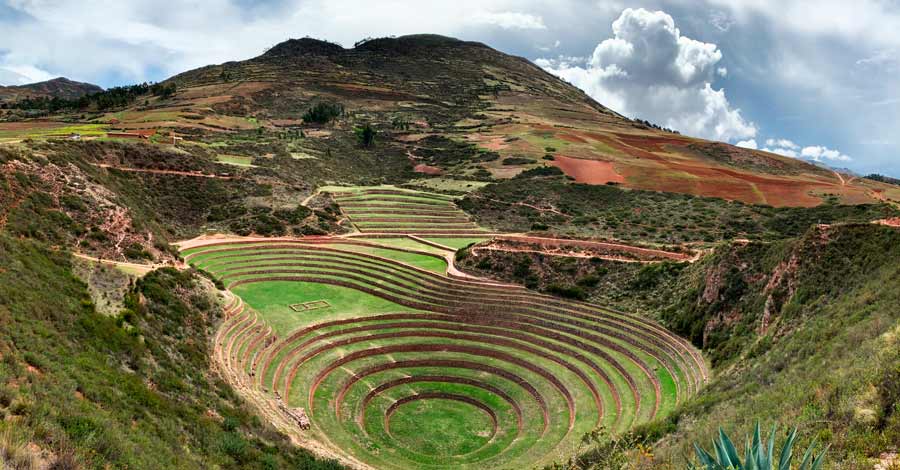
Where is Moray?
The archaeological complex of Moray is located in the district of Maras, province of Urubamba within the Cusco region. The archaeological site is located about 63 kilometers from the Cusco city, on the slope of the Wañinmarca mountain and within the Chinchero-Maras plateau, very close to the Sacred Valley of the Incas. Likewise, this Inca complex is within the territories of the communities of Misminay and Qaqllaraqay.
What is the altitude of Moray?
The altitude is similar to Sacsayhuaman in Cusco, Moray is at 3550 meters above sea level. (the height of the viewpoint). The altitude descends as the depth of the concentric terraces, the deepest one descends 300 meters.
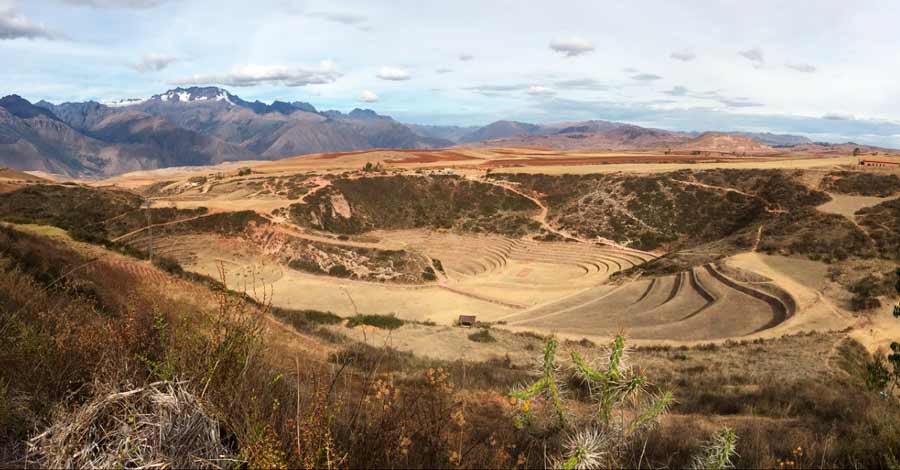
What does Moray mean?
There are a few versions about the meaning of the term Moray, each one very different from the other. The first, according to the Quechua expert Andres Alencastre, indicates that Moray is an erroneous contraction of two native Quechua words, “Muyu” and “Uray”. These words are translated as “circle of the bottom”.
Other versions state that the word derives from a great Inca festivity related to the harvest season, the “Aymoray”. This festivity took place during the month of May. Aymoray was the name the Incas gave to this month.
A third version says that the term derives from the word “moraya”, an Andean product that results from the dehydration of the potato after a long process of 50 days.
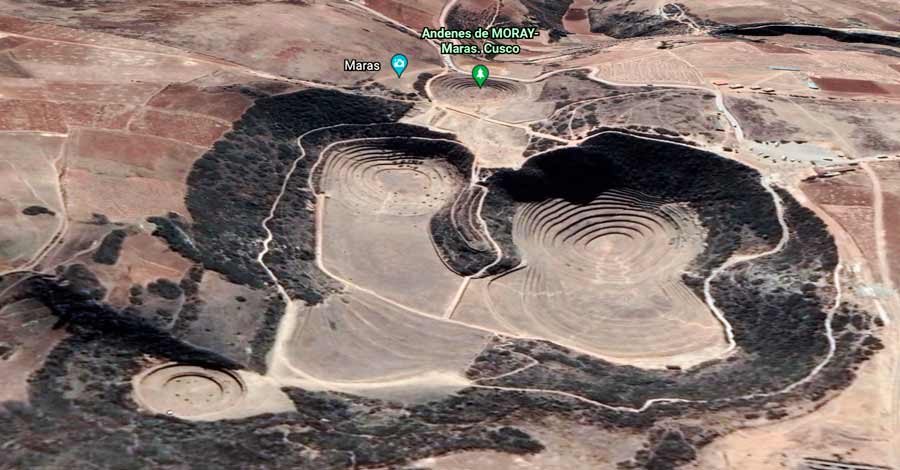
Finally, for the prestigious Peruvian linguist Rodolfo Cerrón Palomino, Moray is a word that has no origin in the Quechua or Aymara languages. For him it would be a puquina word (a language believed to be spoken only by Inca royalty). For this Peruvian linguist, the meaning of Moray would be equivalent to say “center”.
History of Moray
According to the ethnohistorian Maria Rostworowski. before the emergence of the Inca culture, it is known that by the territories that today comprise Chinchero, Ollantaytambo, Maras and the Patacancha ravine, that is to say in part of the Sacred Valley of the Incas and the plateau of Chinchero- Maras inhabited confederations (union of different local ethnic groups), most notably the ethnic group of the Kuyusuyus and the Ayarmacas.
From the arrival of the Incas, they fought constant battles against the Ayarmacas, battles that were a permanent feature until the arrival of the Inca Pachacutec, who completely subdued the Ayarmaca ethnic group. Once the consolidation of the growing Inca state was achieved, the technification of the agricultural activity was promoted. In this way, in order to investigate and experiment with the standardization of Andean products, these gigantic concentric terraces were built in the territories of what was the Ayarmaca ethnic group.
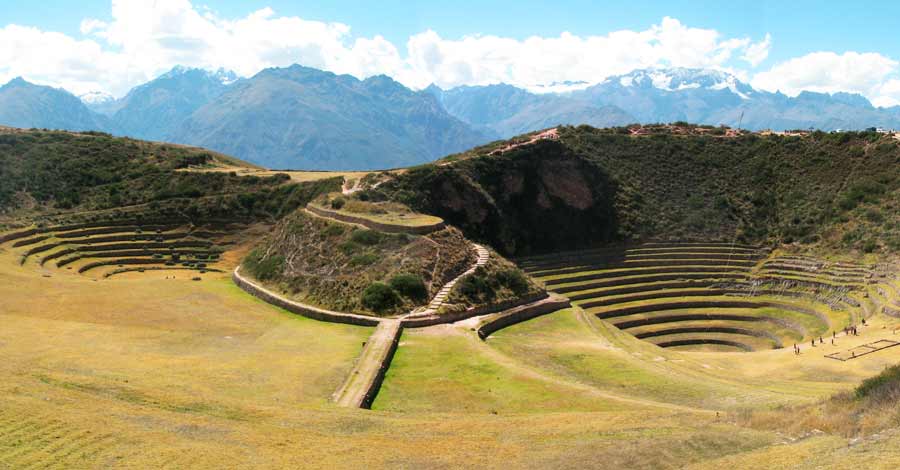
Upon the arrival of Spaniards, after the conquest of Cusco, the rebellion of Manco Inca broke out. Pedro Pizarro, chronicler and soldier of the time makes a brief reference to Moray when mentioning it after being defeated by the army of Manco Inca in Ollantaytambo, because it turns out that in their flight they retired to spend the night in a town called “Maray” that clearly alludes to Moray. This can be deduced as Moray is located between Cusco and Ollantaytambo.
In modern times, the first aerial photograph of the site was recorded in 1931 by the American geologist Robert Shipee, and it was the first time that the site was scientifically disclosed to the world. The place was no secret to the locals, but from that photo foreign researchers ventured to study these peculiar and gigantic concentric terraces.
Characteristics of an Inca terrace or agricultural terrace
The Incas took very good advantage of the flatlands for their agriculture, cultivating their most important products on them, but they were also geniuses in conditioning the slopes, ravines and different reliefs of the mountains for agricultural use. The terraces fulfilled multiple functions, not only serving to cultivate their products but at the same time serving as retaining walls to prevent soil erosion for the recovery of water from rainfall by retaining moisture and even to form microclimates. For these reasons, each terrace was treated with great care.
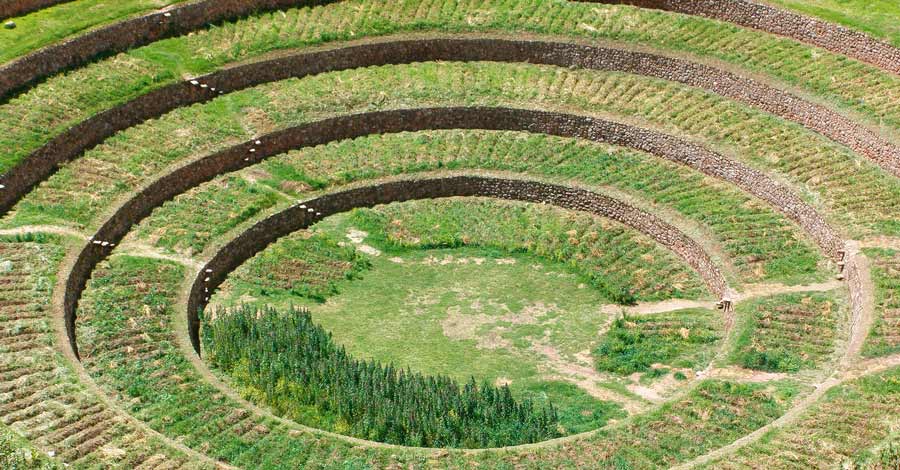
Inca terraces used to have a layer of gravel inside, stones one on top of the other without mortar, under or behind the wall, regulating the amount to facilitate drainage and oxygenation. Humus or fertile soil brought from the jungle, guano from the island, fertilizers made from animal excrement or ashes from agricultural remains were added in order to have a soil rich in nutrients for all types of crops.
Origin of Moray terraces
Moray as a result of a meteorite impact?
There is a theory put forward by Erwin Salazar mentioning that the depressions are the result of the impact of a meteorite, which would have been divided into 9 portions forming the relief of Moray, which would be nothing more than craters. The reality is that, although it is a very appealing theory, it should be taken with a pinch of salt. There is very little scientific evidence to support this theory. There is the fact that the rocks of the places where meteorites fell throughout the world do not have any resemblance with Moray.
The author argues that there are rocks containing quartz (material that forms at high temperatures and intense pressures) at the site, but it was identified that the rocks mentioned do not contain quartz when subjected to the Mohs hardness scale. The mentioned rocks do not reach hardness scale 7, which is the one that characterizes quartz.
Moray built on a doline
Geological studies explain that Moray is the result of a special type of geological depression called “doline”. This type of natural depression is a consequence of the constant erosion suffered by the relief of Moray, one called karstic type, due to rains and subway water currents. This means that the depressions are the result of a geological phenomenon and not of a meteorite.
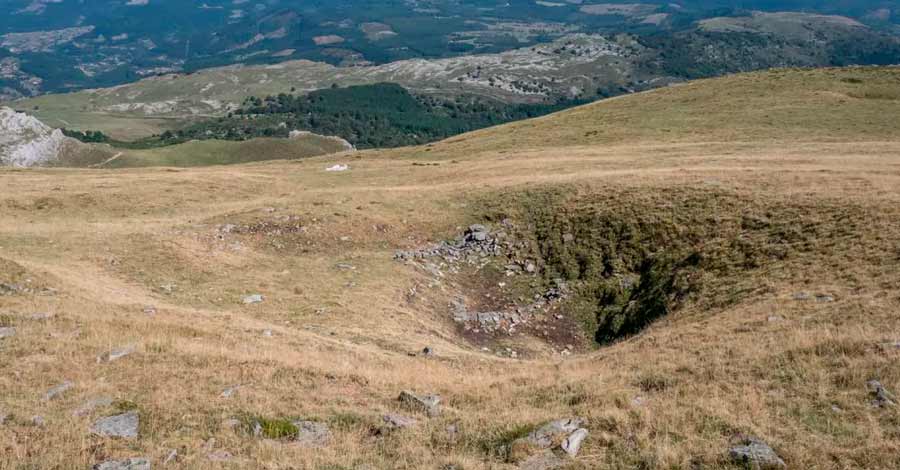
Moray, an experimental laboratory for Andean products?
Theories about Moray over time
When Spaniards arrived in Cusco, they believed that the constructions of Moray fulfilled the function of amphitheaters due to their western vision of a space like this. Even in the 50’s, Luis A. Pardo reaffirmed that they were built during the Inca apogee for gymnastic demonstrations, military exercises or theatrical performances. This theory was only accepted until a certain time.
In the ’70s, Patricia Arroyo’s thesis work argued that they were immense greenhouses for the acclimatization of plants to new climatic environments, initiating a new path for more scientific and academic interpretations.
In later years John Earls would propose the most widespread and accepted theory at the time, Moray was a large laboratory or experimental agricultural station. According to ethnohistorian Maria Rostworowski, the temperatures from the base to the summits vary up to 15°C. Other authors state that this is due to the fact that Moray was a large laboratory or experimental agricultural station.
According to other authors, other factors such as the subaltiplanic location of the site, the winds, its geological composition and its location in front of the snow-capped mountains and a series of other factors allowed the recreation of up to 20 types of climates and microclimates that would represent about 1500 meters altitude, that is, simulating the conditions of 2500 meters (temperate zone of Yunga), 3200 meters (Quechua zone) and 4000 meters (frigid zone). The lower zones would have low temperatures, hot in the middle and temperate zones and warm in the upper zones.
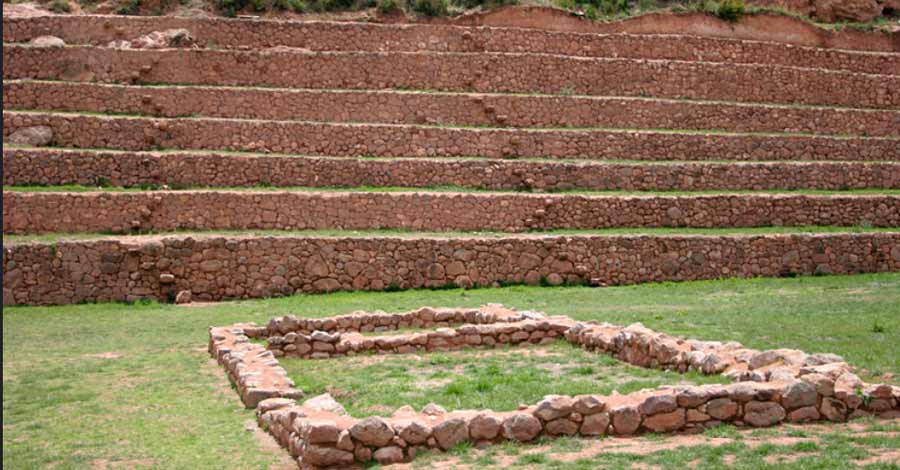
This theory concludes that this would be the basis for Andean man to have domesticated more than 5000 varieties of potatoes, 400 of corn and many others of different Andean products, a prototype of the biological greenhouse where they studied behaviors, effects and climate conditions applied to different Andean crops.
Other theories about Moray
On the other hand, there are authors who consider that the temperature variations mentioned are exaggerated and have much more to do with the position of the sun, shade and humidity as initially proposed by John Earls. They consider that the variations are not so high and that in many cases the difference is only 1°C, leading them to think that the work of Patricia Arroyo by considering it a greenhouse for acclimatization of plants to new environments would be the function that Moray fulfilled.
The four sectors of Moray
Qechuyoq Muyu or Hatun Muyu:
It is the largest, widest and deepest set of concentric terraces. The visitor identifies it as the largest and because it is the one in the shape of an eight. It has a diameter of 119 meters and 150 meters deep. It is made up of 14 terraces, seven circulars and seven with extensions to the southwest. Within the complex, there are two rectangular structures that are believed to have been seed deposits. It was in this sector where most of the investigations on the function of the complex were carried out.
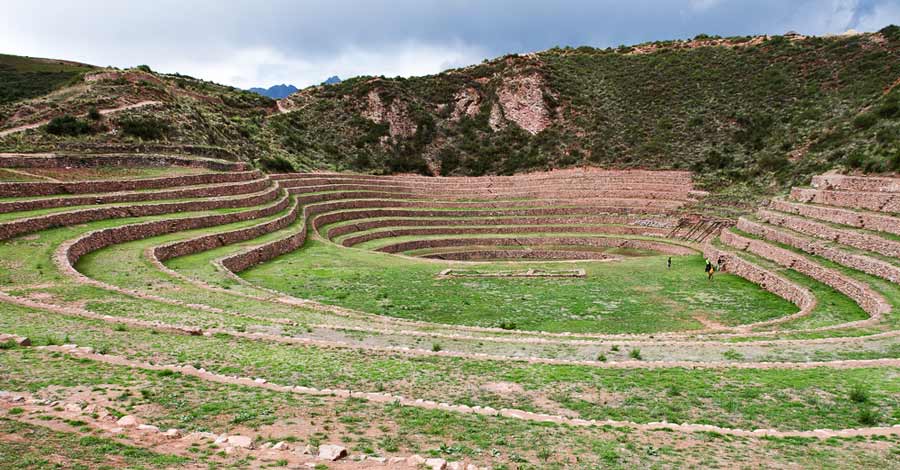
Simiyoc Muyu or Ccollpactoqo:
It is located next to and at the same level as the first, has seven circular rings and is the most deteriorated sector. Before the prohibition of access to the lower levels, shamanic rituals and yoga sessions were held here.
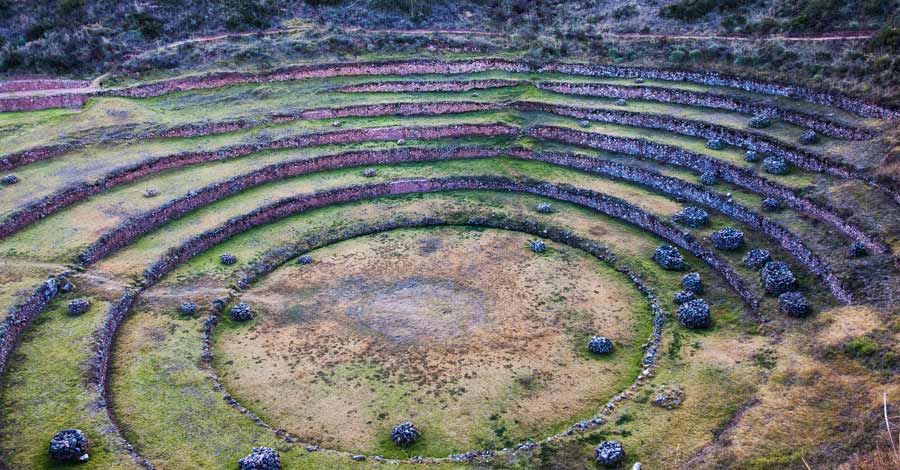
Intiwatana Muyu or Paqattoco:
It is located to the north, has six circular platforms and is 37 meters in diameter. Its name translates as “a place where the sun is tied”, as well as many sectors of other Inca constructions.
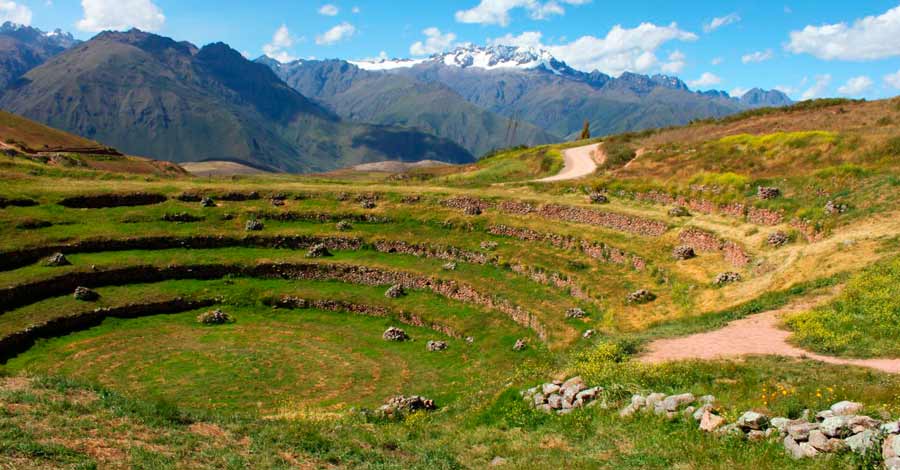
Kuychi Muyu or Quechuyoctoqo:
It is the smallest as it only has two concentric terraces and is 24 meters in diameter. It is said that many years ago, a local landowner used to keep his pigs here.
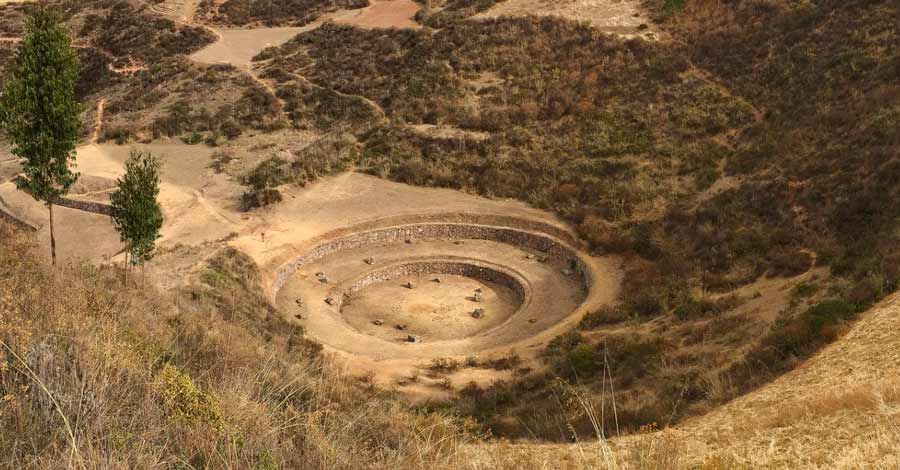
How to get to Moray?
As we mentioned Moray is located within the district of Maras, very close to the famous salt mines. It can be reached in two ways, although arriving on your own is more complicated.
Get to Moray on your own
This option is somewhat more complicated and is recommended if you have enough time to make the journey to the place. It is necessary to take transportation by stops. The positives of this option are the personal disposition of your time in the place and that internal sensation of adventure when making the trip on your own.
The first thing to do is to take a shared transport from Pavitos street in Cusco, these vans go to Ollantaytambo as the final destination. You should ask if the route to get to the place will be the Huarocondo or Chinchero route. You should take the option of the Chinchero route. After passing the town of Chinchero you should get off at the intersection of the road with the access to the town of Maras. The cost of the ticket is approximately 10 to 15 Peruvian Soles
The next step is to look for another transport or bus whose prices will fluctuate according to the demand of passengers and can be between 10 and 30 Peruvian soles to get to Moray or the Maras town. If you only get to the Maras town ( located about 9 kilometers from the concentric platforms of Moray) you should look for other private or collective transportation (preferably from the local plaza) whose price will vary. The complicated thing about going on your own is the waiting time and the unpredictability of the circumstances to find or not to find the transport, to this added that you must repeat the process for the return.
You can also leave Cusco by public transportation to Urubamba from the “Puputi street” (about two hours of travel). From Urubamba you can hire private transport to get to Moray, the price could be around 50 soles for one way.
Get to Moray with a travel agency
This option is more practical and ideal for those who have less time. Almost all agencies include the transportation service (to the archaeological site itself) and the guide. It is important to emphasize that you must use the services of a formal agency that has the permits granted by the corresponding authorities. Normally the tour to Moray includes the visit to the salt mines of Maras and other sites according to the agency or the options you choose.
Moray’s weather
The climate is very similar to the city of Cusco due to the similarity in altitude. As in the entire southern Andean region, there are two well-defined seasons: dry season (from May to November) and rainy season (from November to May).The average annual temperature varies between 12 and 24°C during the day and is cooler at night. Temperatures are conditioned by the mentioned rainy season and dry season.
Visiting hours in Moray
Tourist activities take place during uninterrupted hours from 6 am to 6 pm.
Moray entrance fees
Moray is part of the tourist circuit of the Sacred Valley along with other archaeological sites. You can access the site by acquiring the “Cusco Tourist Ticket” (BTC), either the partial tourist ticket or the full tourist ticket.
Peru has many incredible places to discover. With many years working at the travel industry, Auri Travel is happy to help with your travel plans to Machu Picchu and other places around the country. Come and enjoy your Peruvian Adventure with us!




